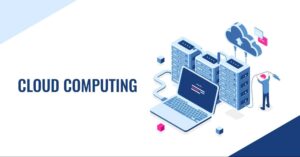Have you ever faced a situation where for each item you check off your to-do list, three or more appear magically? While working in the human resource department, you may have never-ending tasks, and there is always something more you can do to make your company better. Hence, you must never ask what you can do, instead ask what should be done.
In order to help you focus on the crucial tasks, we have presented a list of the significant HR tips for managing each critical area of your job. You can leverage them to streamline your processes, create a better company culture, save time, and more.
For Hiring Top Candidates
- Accelerate Things with Applicant Tracking System
The simplest way to make your recruitment process more effective and provide a better experience for a candidate is to leverage an ATS. There are lots of information to juggle during hiring candidates, from applications and resumes to offer letters and interview notes. Hence, keeping everything updated and organized by hand can be time-consuming work for HR professionals, and a misplaced document could slow down your recruitment process significantly.
On the other hand, applicant tracking solutions (ATS) can aid you to manage candidate information, accelerate communication, and more.
- Eliminate Redundant Steps in the Hiring Process
In today’s age, speed is the key to winning the best candidates for your company. Take a look at your recruitment process and ask yourself whether every step is truly needed. Do your candidates really need to sit through five rounds of interviews? A better way to acquire the latest perspective on the process is to take on the role of an applicant and apply for a job in your company. Later, finish with multiple rounds of interviews, along with a final offer. It will help you to see how it feels from a candidate’s point of view.
- Prioritize Candidate Experience
Acceleration is not the only priority, at the same time, you also want to offer an excellent candidate experience whether you hire someone or not. Candidates who will turn into hire after great recruiting experiences are more likely to stick around and become engaged employees. The ones who are not recruited also will leave with a positive impression. They will tell their family and friends to apply for a job, or they will apply themselves again.
- Define Company Mission, Vision, and Values of Your Organization
It plays a pivotal role in shaping HR strategies and goals in the long run. The mission of your business will aid employees in understanding why the business exists and who it is serving. Whereas the vision offers visibility on what the company hopes to acquire and where it can find itself in the future.
The values refer to advantages that serve as a driving force behind the operations and actions of the business. All these three directly affect the number and type of staff required to meet business objectives.
For Handling People Data
- Automate Data Storage
Without a way to monitor, update, and store people’s data effectively, the daily functions of human resource take a heck of a lot longer. Excel spreadsheets and metal filing cabinets may be better than nothing. But in between security risks and misplaced documents, they can be time-consuming as well. In order to keep your HR data truly organized and secured, there is no other better solution then leveraging human resource management software, such as SutiHR.
- Power of HR Reports
Once the data becomes easy to access and organized, reporting turns out to be much easier. It is observed that nearly one-third of executives want frequent reports on the HR data, easier reporting is good news for the HR department. Online human resource management solutions provide quick access to a lot of valuable data like demographics, turnover, and more, which can aid your company in making strategic and informed decisions.
- Encourage Self-Service for Employees
While selecting the HR software solution, make sure that it includes employee self-service. The feature enables your workers to access and update their personal information and preferences without knocking on the door. But, if you already have this feature with the solution, ensure to encourage your staff to leverage it. It is observed that employee self-service can minimize the amount of time needed for redundant tasks by 50 to 70 percent that can save up to three hours per day.
- Make Sure to Implement Clear Channels of Communication
Miscommunication is the root cause of every HR problem. So, ensure that your staff knows who they can speak to when they are confused about any factor. Plus, who they can approach when they are facing trouble, either personal or work-related. Make sure to keep the door open so that they can voice their concerns. This way, you can have plenty of forewarning and address a minor problem before it turns into a crucial challenge.
For Effective Onboarding Process
- Know What New Recruits Want from Onboarding
As effective on boarding benefits your company. Similarly, the process must also benefit the new recruits through it. Do you have an idea of what new recruits want from this onboarding process? Today, the majority of new employees want training, an overview of the company’s policies, a review of administrative processes, and an assigned employee mentor.
Hence, try surveying new workers after completion of the onboarding process to know what elements they find most valuable and which ones need improvement.
- Paperwork Should be Taken Care of before the First Day
New employees coming out of the recruitment process are excited and energized to start their new job eagerly. In order to capitalize on this enthusiasm, you must make the most of every new hire’s first day. It means introducing them to the team members and employers, setting them up for success, and outlining their job expectations.
- Include Culture into Process
When new recruits join your company, you are not just asking them to do their work, but you are asking them to adopt your company culture. It signifies that on-the-job training must comprise culture training, just like technical training. Hence, leveraging a checklist like this can aid you to make culture as a pivotal part of the onboarding process and get the new recruits started in the right manner.
- Ensure that Policies are Updated and Easy to Understand
Lengthy policies and contracts written in complicated legalese is an immediate source of mistrust. There is also a little point in laying out policies in the first place if your staff can understand them.
Stick to the basic language, do not use irrelevant information, and take your time to view these documents with employees. When your organization evolves, make sure to upgrade these policies on a daily basis. Follow these steps and be assured that you are doing everything to encourage a happy and productive working environment.
- Establish Organization Dress Code and Code of Conduct
As an evolving company, you are probably eager to define your organization’s culture. Also, the code of conduct is a great place to do so. You can cover all aspects here-from how the staff is expected to behave in their dress code. When it comes to dressing code, the more detail you can provide, the better it becomes. You can also provide images and catalogs from a specialist provider if that is the look you need for client meetings.
Also read:- Simple Things Every Business Should Have
For Performance Management
- Streamline Performance Reviews
In order to keep employers and workers engaged in the performance management process, you must make it accessible and simple. It must feel like an opportunity to provide genuine feedback instead of just another hoop to jump through.
One means of doing so is by using performance reviews that ask only a few and meaningful questions such as “What do your employees do well?” Keeping them simple leaves more energy and time for the people to exchange significant feedback and make real enhancements.
- Divide Performance Management and Compensation Conversations
In many companies, compensation is tied to performance closely. This is not a bad thing to talk about performance, and compensation in the same conversation can erode the honesty and accuracy of feedback. Workers may say or do whatever they need to win more money, and employers who feel the budget pressure from above may write down a positive review to keep away from giving a raise.
Also read:- write for us tech
Also read:- Technology write for us
Also read:- write for us technology blogs
Hence, if you separate the conversations, then employers and staff will get the space to discuss their performance openly without any pressure on compensation decisions.
- Discuss on Performance Frequently
Many companies are doing away with annual performance reviews in favor of less formal, frequent performance conversations. If your company has not yet jumped on the bandwagon, then it is the right time. Many frequent assessments benefit both employees as well as employers, as they can discuss current events and exchange timely feedback.
Automated human resource management software can make HR operations a lot easier and effective for the entire department, which can then put more productivity towards the betterment of the organization.
Author bio:
Hello, I am a professional SEO Expert & Write for us Technology blog and submit a guest posts on different platforms- we provides a good opportunity for content writers to submit guest posts on our website. We frequently highlight and tend to showcase guests.




